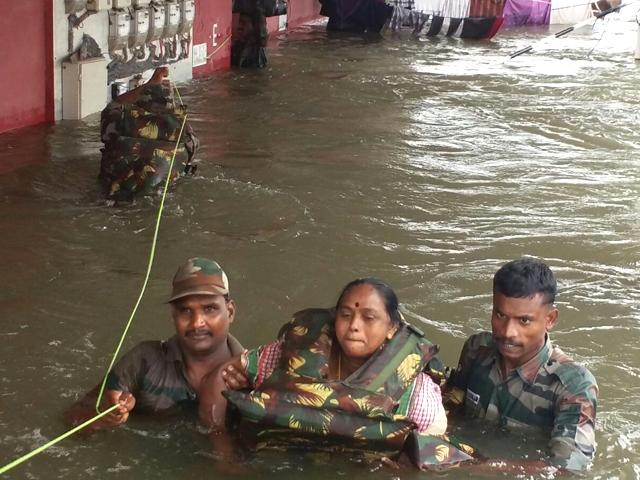In our nation, the general opinion formation is largely dominated by the daily dose of the biased media and mass outreach of the unauthentic social media. In this pace of achieving the viewership higher than others, it is inevitable to miss out on the details of the other important events. Sadly, the fast lives formed after the expansion of the corporate culture mars the spirit acknowledge the contribution of many neglected heroes of mother India.
As you read above paragraph, preconceptions may have surrounded your mind. Many pictures of different unsung heroes would have knocked on the doorstep of your brain. Our armed forces, border security agencies, intelligence and what not was happily playing with your brain over this span of time. But I am here to introduce you to an agency which is one step further. An agency which many of us are not even aware of; an agency which does not have a recognition as high as army, navy or airforce. But their presence is silently making a difference which we all fail to accredit. The unsung heroes of National Disaster Response Force and Civil Defence aka NDRF.
Yes, the same NDRF which has rescued more than 26000 people in 5 different flood-hit states of Bihar, Rajasthan, Madhya Pradesh, Uttar Pradesh and Gujarat.
Fanning out 56 rescue and relief teams in the region hit by heavy rains, NDRF is wordlessly contributing its bit in the national interest. The team has also been successful in extending the medical help to close to 10,000 people in these states.
Of all these rescues, 5000 were alone in one day from the state of Bihar and 800 from UP. Apart from this, a team which was already deployed in the state of Sikkim abandoned 450 people from two small flood-hit villages of Tingbung and Lingdang on Sunday.
While these statistics are a comforting number presenting a small picture of the larger role enacted by the agency, let me introduce you firmly to the NDRF.
Parented by Ministry of Home Affairs, Government of India, NDRF was formed in the year 2006. In a short span of 10 years, it has got itself into the hall of fame of the professional forces. To add to the fame, it is the largest stand-alone disaster response force in the world.
While we discussed the rescue operation in 5 states, it is just another feather in the cap of this reputed agency. Serving commendably in the Nepal earthquake of 2015, Chennai floods 2015, Jammu and Kashmir floods 2014, Assam-Meghalaya floods 2014 and many other natural and man-made disasters. NDRF has successfully evacuated close to 5 lakh lives in India and abroad.
Having a global recognition for its operations, it is also involved in fostering the development in order to achieve a disaster resilience nation. This project includes the training the locals, community capacity building. As a result of which, 40 lakh people have been trained so far!
With a motto of “AAPDA SEVA SADAIV”, NDRF is headed by Director General OP Singh IPS and consists of 12 battalions. These 12 battalions comprise of three each from the Border Security Force (BSF) and Central Reserve Police Force, two each from Central Industrial Security Force (CISF), Indo-Tibetan Border Police (ITBP) and Services Selection Board (SSB). Each battalion has a strength of 1149 trained men which includes the professionals like engineers, electricians, technicians, medical team and the dog squad. Each battalion is subjected to rigorous training to combat the biological, chemical, nuclear and the radiological disasters.
The first major test for a then infant NDRF was the Kosi floods of 2008. Need not mention, our men did a commendable job as they airlifted 153 motorized boats and 780 members of the team. The end result was an international news! 1,00,00 people were rescued in the initial stage of the operation itself and it was their efforts which minimized the loss of lives.
This series of successful stories which started in 2008 later went on to bringing laurels continuously. While we read about the apparent impossible feats achieved by them, it is natural to ponder upon their history and the need of formation.
Taking a privilege to take you back to the 90s, let me remind you of the debate on Disaster Response & Preparedness which took a face on the international platform. As a result of which Yokohama Strategy Plan aka YSP (1994) and Hyogo Framework for Action (2005) were adopted by the United Nations. It was around the same time when India hosted the invited guests like Orissa Super Cyclone (1999), Bhuj Earthquake in Guajarat (2001) and Indian Ocean Tsunami (2004).
These repeated events tested the tolerance of the national government and irked a need to have an individual agency to fight the same. After intense rounds of discussions and meetings, Disaster Management Act was enacted on December 26th , 2005 which led to the formation of The National Disaster Management Authority (NDMA). The assigned job to the NDMA was to prepare a blueprint constituting the policies and plan the guidelines for the disaster management.
The Disaster Management Act has the sanctioned provision for the establishment of NDRF for the specialized purpose only. In the initial days of the constitution of NDRF, the personnel were posted at different locations for the routine law and order purposes which, however, was scrapped in the year 2007. In a meeting with the Prime Minister on October 25, 2007; a need to empower NDRF for the dedicated purpose of the disaster management was highlighted and accepted. On February 14th, 2008; a notification was released which made the NDRF a dedicated force to respond to the disaster-related crisis and an IPS level officer was set to head the agency as the Director General.
The presence of the agencies like the NDRF instills a sense of security in the minds of the common people. Time and again, they have proved their worth by accomplishing the given tasks in the best interest of the nation.
